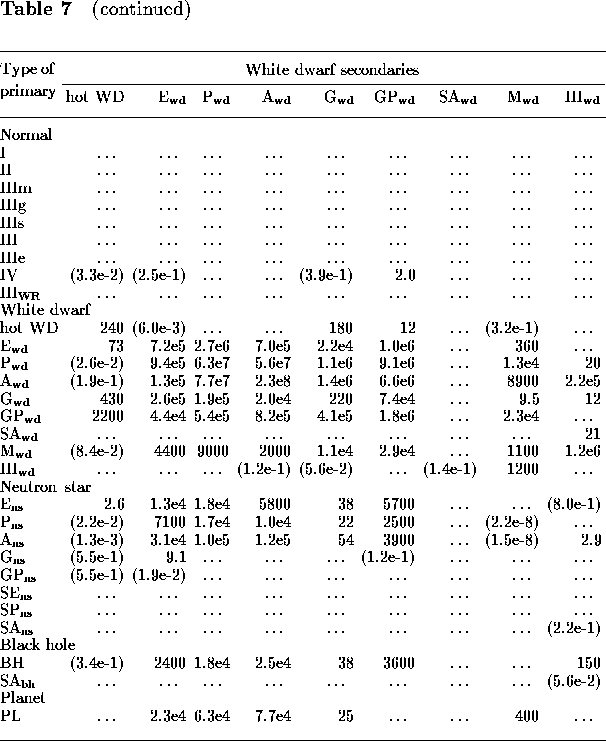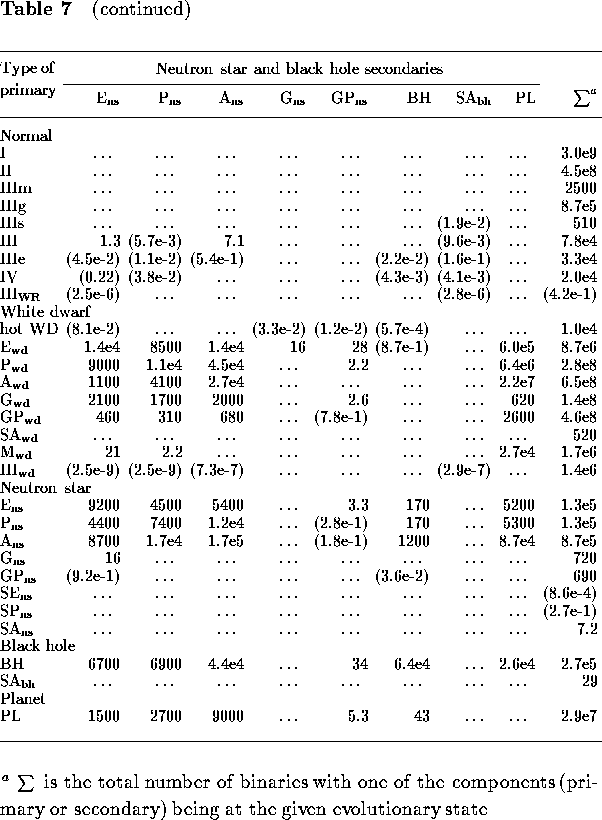Next: Artificial Galaxy: Full Matrix Up: Restrictions on the Scenario Previous: Binary Pulsar Diversity and
![]()
![]()
![]()
![]()
![]()
Next: Artificial
Galaxy: Full Matrix Up: Restrictions
on the Scenario Previous: Binary
Pulsar Diversity and
Now we present the topographical map for the COOC criterion calculated
for both galactic X-ray sources taken from Table 4
and binary pulsar species from Table 6 in
coordinates the initial mass ratio exponent ![]() - mean kick velocity
- mean kick velocity ![]() (Figure 26). The calculations were
performed for both the maxwellian (equation 7.4.1)
- (left-hand panel) and Lyne and Lorimer's (equation 7.4.2)
- (right-hand panel) distributions for the kick velocity w.
The innermost curve corresponds to a half-an-order uncertainty between
observations and calculations (COOC = 3.3).
(Figure 26). The calculations were
performed for both the maxwellian (equation 7.4.1)
- (left-hand panel) and Lyne and Lorimer's (equation 7.4.2)
- (right-hand panel) distributions for the kick velocity w.
The innermost curve corresponds to a half-an-order uncertainty between
observations and calculations (COOC = 3.3).
As we have shown just above, the binary pulsars' statistics favor lower
kick velocities, whereas Galactic X-ray luminosity acts in the opposite
direction. This largely defines the shape of the curves in Figure 26.
A wide kick velocity distribution (like Lyne and Lorimer's) allows a wider
region of parameters ![]() and w for the same comparison level
between observations and calculations. If one takes Lyne and Lorimer's
kick with
and w for the same comparison level
between observations and calculations. If one takes Lyne and Lorimer's
kick with ![]() km s
km s![]() , the feasible initial mass ratio exponent can range from
, the feasible initial mass ratio exponent can range from ![]() 0
to 1.5 within a seven times uncertainty between the observations and calculations.
0
to 1.5 within a seven times uncertainty between the observations and calculations.
Figure 26: The COOC criterion for X-ray galactic sources and
binary radiopulsars versus the initial mass ratio exponent ![]() and mean space kick velocity for different kick velocity distributions.
and mean space kick velocity for different kick velocity distributions.

